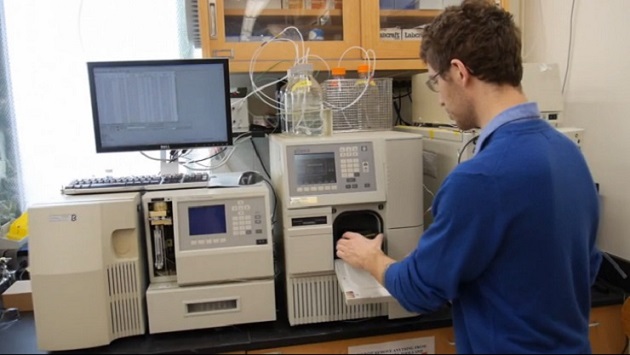Professor Greg Boyer, with the algal toxins laboratory at the Environmental Science and Forestry of the State University of New York (SUNY-ESF) continues to demonstrate a valuable capacity for the state’s monitoring of a suite of toxins produced by cyanobacteria blooms known to have human health implications. This monitoring is necessary for rapid response to toxic cyanobacteria in the Great Lakes region and beyond.

- Chemists at SUNY’s College of Environmental Science and Forestry MERHAB-LGL lab are leading the way in protecting New York’s lakes. Credit: SUNY ESF
This lab is an outcome of the Monitoring and Event Response for Harmful Algal Blooms Program in the Lower Great Lakes (MERHAB LGL) project, funded by NCCOS from 2002 to 2008, and is an integral part of the successful New York Citizens Statewide Lake Assessment Program (CSLAP). CSLAP is a partnership between the New York Department of Environmental Conservation and lake residents who help to monitor and collect important lake data; information used to understand lake conditions and to develop lake management plans. In 2015 alone the lab analyzed over 2,000 samples for cyanotoxins from across New York.
In addition, the MERHAB LGL lab is often one of the first called upon by state, federal and international scientists and managers when the presence of cyanobacteria toxins in waterbodies is suspected. The lab offers sample analysis to agencies and investigators at reasonable cost and with quick turnaround times to aid in minimizing the impacts from toxic HAB outbreaks. For example, the lab supported Ohio water managers during the 2014 Toledo drinking water crisis and the 2011 Grand Lake St. Marys toxic bloom. It has also provided toxin analyses to aid U.S. and Chinese partners studying pollution in Lake Tai, near Shanghai China.
For more information, contact Marc.Suddleson@noaa.gov.
